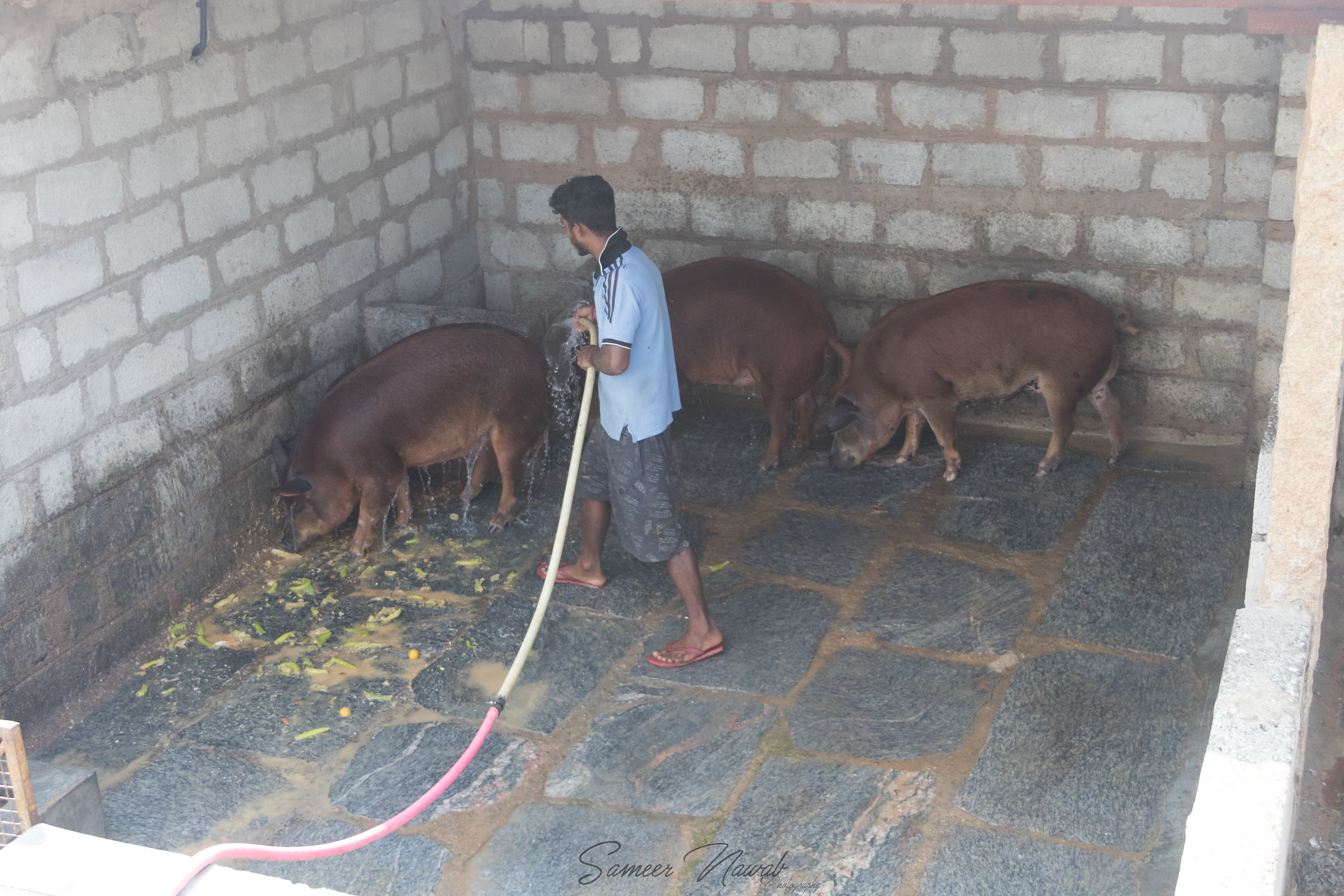Background
Livestock farming is a backyard livelihood for a large population in India. Animals range from cows, goats, buffaloes, poultry, pigs, camels primarily in different geographies. They usually occupy makeshift sheds and while that works for subsistence, making it a reliable livelihood needs more inputs. 20 to 27oC is the ideal temperature for animals to stay comfortable with space to roam around and water and feed available. Proper sheds and managing them can improve animal comfort and productivity and should be designed to maximize ventilation and protection from the increasing climate stresses.

Improper shed management techniques
Discomfort of animals lead to high mortality or reduced produce quality, like milk yield falls for cows and body weight goes down for chickens. Many local techniques are not able to withstand changing temperatures which also include recurring and higher maintenance costs which are unaffordable for marginal farmers.

Effects of Climate Change
Extreme temperatures—cold and heat leave animals in high discomfort. Extreme heat waves reduce conception rates by 10% to 20%. Changes in rainfall patterns and increase in water stress increase the spread of vector-borne diseases and food-borne diseases and the susceptibility of livestock to such diseases.
Solution
Cool sheds consist of feed and water dispensers, appliances for milking, cleaning and sanitisation as well as for comfort, namely lighting and fans or cooling application depending on climate type. A well-designed Cooling Shed is the most cost-effective solution to address the problems related to heat stress and its impact on cattle. This can include passive (built environment) and active (DRE-based technologies like fans, coolers) to extract heat and cool the sheds while keeping the appropriate temperature and humidity. A well-designed shed would reduce heat load on animals by around 30-40 %.
Impact
1. Improved health of the livestock leading to reduced disease incidence.
2. Reduced impact of heat stress leading to decreased deaths in animals and better quality.
3. This leads to increase in farmers’ income through reduced regular maintenance fees and better produce.
Building Climate Resilience
Mitigation
These low-impact solutions optimise on the natural ventilation and light to minimise energy usage. Energy efficient solutions appliances lead to energy savings and less pollution.
Adaptation
These shed management techniques offer insulation from reliance of produce and ensure incomes.
